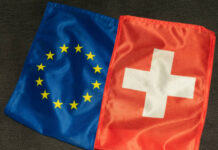Market movers today
A quiet start of the week in terms of economic data. Focus remains on the war in Ukraine and increasing calls for stricter sanctions on Russia after Ukrainian forces reclaimed the city of Bucha over the weekend and unveiled images of massive civilian casualties left behind by the Russian troops. Russian-Ukrainian peace talk negotiations to continue Monday.
Reserve Bank of Australia (RBA) will have a meeting early tomorrow morning, we expect no changes to the monetary policy.
Later in the week, we will get minutes from the March meetings of FOMC (Wednesday) and ECB (Thursday) alongside several speeches from both central banks throughout the week. March services PMIs will be released for the US by ISM on Tuesday and for China by Caixin on Wednesday.
The 60 second overview
Pictures of civilian casualties in Ukraine trigger calls for stronger EU sanctions against Russia: Horrific pictures showing civilian deaths in the aftermath of withdrawal of Russian troops in the town of Bucha outskirts of Kyiv led to a flurry of calls from EU leaders to tighten the sanction regime against Russia. Estonia’s Prime Minister Kaja Kallas said a fifth round of “strong EU sanctions” should come as soon as possible, while Polish Prime Minister Mateusz Morawiecki called on EU leaders to hold an emergency summit soon to discuss the events in Bucha.
Decent non-farm payroll report in the US on Friday: Job growth in the US economy was decent in March with 431k jobs created despite uncertainties and rising commodity prices. In addition, there were positive revisions the past two months (+95k). The unemployment rate fell further to 3.6% from 3.8%, suggesting a very tight labour market. Wage growth was strong, increasing 0.4% m/m. Overall the report supports our call for tighter Fed monetary policy over the course of the year (including front-loading), although there was no big market reaction.
US manufacturing sector continues to be in expansionary territory amid strong price pressures: ISM manufacturing fell slightly to 57.1 in March from 58.6, but is still well in expansion territory. Weaker new orders growth drove the decline (53.8 from 61.7). Prices paid took another leap higher (87.1 from 75.6) and employment also continues to rise (56.3 from 52.9). The bottom-line is rising stagflationary forces, but labour market is doing ok.
FI: It has been a volatile week in the global bond markets with 10Y US Treasuries trading between 2.30% and 2.55% and Bunds between 0.55% and 0.70%. The oil price has declined from USD 110bn per barrel and is now trading at USD 100 per barrel. However, we are seeing food prices rise and the risk of Russia closing for the gas to Europe can lead to significantly higher gas prices as the war continues in Ukraine. Furthermore, Europe warns Russia on more sanctions given the possible war crimes in Ukraine. Hence, the war between Ukraine and Russia will continue to dominate markets this week.
FX: EUR/USD is likely to continue to shift lower over coming quarters. SEK to be unaffected by dividend flows. Structural liquidity is turning for NOK (-rates).
Credit: Credit markets had an uneventful day Friday with modest movements. ITraxx Main was 0.7bp tighter at 72.2bp while Xover was unchanged at 338.4. Also cash bonds saw modest movements with Investment Grade 0.4bp wider at 63.7bp while High Yield was 2.2bp tighter at 328.7bp.
Nordic macro
This weekend the wage negotiations in the Norwegian manufacturing sector, which sets the bar for all sectors, ended with an overall result at 3.7 % in 2022, including overhang and expected wage drift. This is exactly in line with Norges Bank’s estimate from the March MPR, and should reduce the risk of more than four hikes this year.













